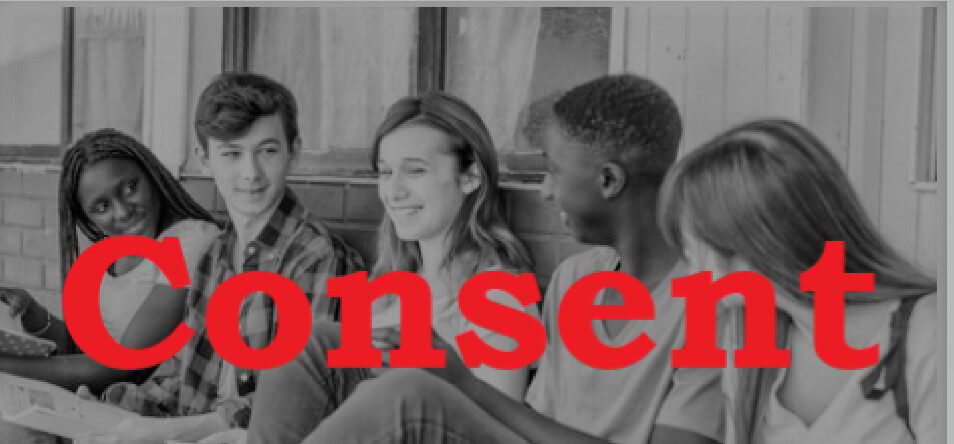At PB West, we hear a lot about consent—its importance, the challenges of teaching it, and the question of when and how to teach it effectively. Educators and parents often ask: What is the right way to teach consent? And what is the right age to start?
Last year, we worked with over 3,000 high school students, and many expressed a troubling belief: consent doesn’t really exist. This suggests that current approaches—often centred on rules to follow—aren’t fully resonating. Rules are essential, but when consent is taught solely as a checklist, it can lead to judgment, shame, and policing of self and others. For students who have experienced trauma or grown up in environments where consent wasn’t practised, this approach can feel alienating, undermining self-worth and hindering growth.
The Essence of Consent
Consent is more than a set of guidelines; it’s a complete concept that reflects our values. At its core:
Consent is the action that demonstrates our belief in everyone’s right to feel safe
Consent represents our respect for equality.
Consent ensures all individuals access and practice their right to self-determination
Consent isn’t just about sexual situations. It includes informed consent (e.g., medical decisions), expressed consent (e.g., agreeing to group activities), implied consent (e.g., participating in a shared task), and more. By teaching consent as a universal principle, we move beyond rules to foster respect, empathy, and responsibility.
With consent, we don’t overpower, bully, coerce, or pressure. Instead, we ask, listen, and value the response—whether it’s a “yes” or a “no.”
Why Is Teaching Consent So Hard?
Despite widespread support for equality and human rights, living out the essence of consent is challenging. Our culture often prioritises individualism and competition, driven by capitalism and media narratives like “Never give up,” “Just do it,” or “It’s all about me.” These messages, embedded in advertising and popular culture, can glorify winning at others’ expense, fostering a sense of entitlement that clashes with consent’s emphasis on mutual respect.
For young people, these conflicting signals are amplified by social media and peer dynamics, making it harder to internalise consent as a natural practice. Students who’ve experienced trauma or grown up in environments where boundaries weren’t respected may find consent particularly difficult to grasp, as it requires trust and vulnerability.
How to Teach Consent Effectively
To address these challenges, we need to teach consent as a life skill from an early age, focusing on its underlying values rather than just rules. Here’s how:
1. Start Early with Age-Appropriate Lessons
Preschool to Early Primary (Ages 3–8): Teach bodily autonomy and respect for boundaries. Use scenarios like asking to borrow a toy or respecting a friend’s “no” to a hug. Frame consent as a way to show kindness and respect. In the home, classroom and childcare centres, role model and use consent, remember to ask and listen to the response.
Middle Primary (Ages 9–12): Introduce peer pressure and checking in with others. Role-play asking for and giving/not giving consent in group activities or sharing personal items.
High School (Ages 13–18): Discuss sexual consent, power dynamics, and media influences. Encourage critical analysis of societal messages that promote entitlement or control, and explore consent in digital spaces (e.g., sharing photos).
2. Embed Consent in Everyday Practice
Model consent in classrooms and homes by asking permission before involving others in activities or sharing their work. This normalises checking in and respecting responses, making consent a natural part of daily life.
3. Focus on Values, Not Just Rules
Teach that consent strengthens relationships and communities by respecting everyone’s rights. Use discussions and reflective exercises to help students connect emotionally to the concept, such as asking, “How does it feel when your boundaries are respected or ignored?”
4. Address Cultural Influences
Help older students critically analyze media and cultural messages that glorify individualism or power over others. Ask: Does this align with my values? Does it promote respect or alienation? This empowers students to challenge harmful narratives and embrace consent as a counter-cultural act of equality.
5. Support Trauma-Informed Approaches
For students who’ve experienced trauma, consent education must be sensitive and inclusive. Provide safe spaces to practice boundary-setting and emphasise that everyone’s pace of learning is valid. Avoid shaming language and focus on empowerment.
When to Start Teaching Consent?
Consent education should begin in early childhood, as soon as children can understand basic concepts like sharing or personal space. By starting early, we lay a foundation of respect and empathy that makes teaching specific rules—like those around sexual consent—easier later on. Waiting until high school risks missing critical developmental windows where values are formed.
Moving Forward
Teaching consent as a holistic concept—rooted in self-determination, equality, and safety, can transform how students understand and practice it. By starting early, embedding it in daily life, and addressing cultural barriers, we can move beyond rules to foster a generation that truly values consent.
We’d love to hear your thoughts and experiences on teaching consent. To learn more about embedding consent in your practice, contact us at info@pbwest.com.au or book our next training session here.



